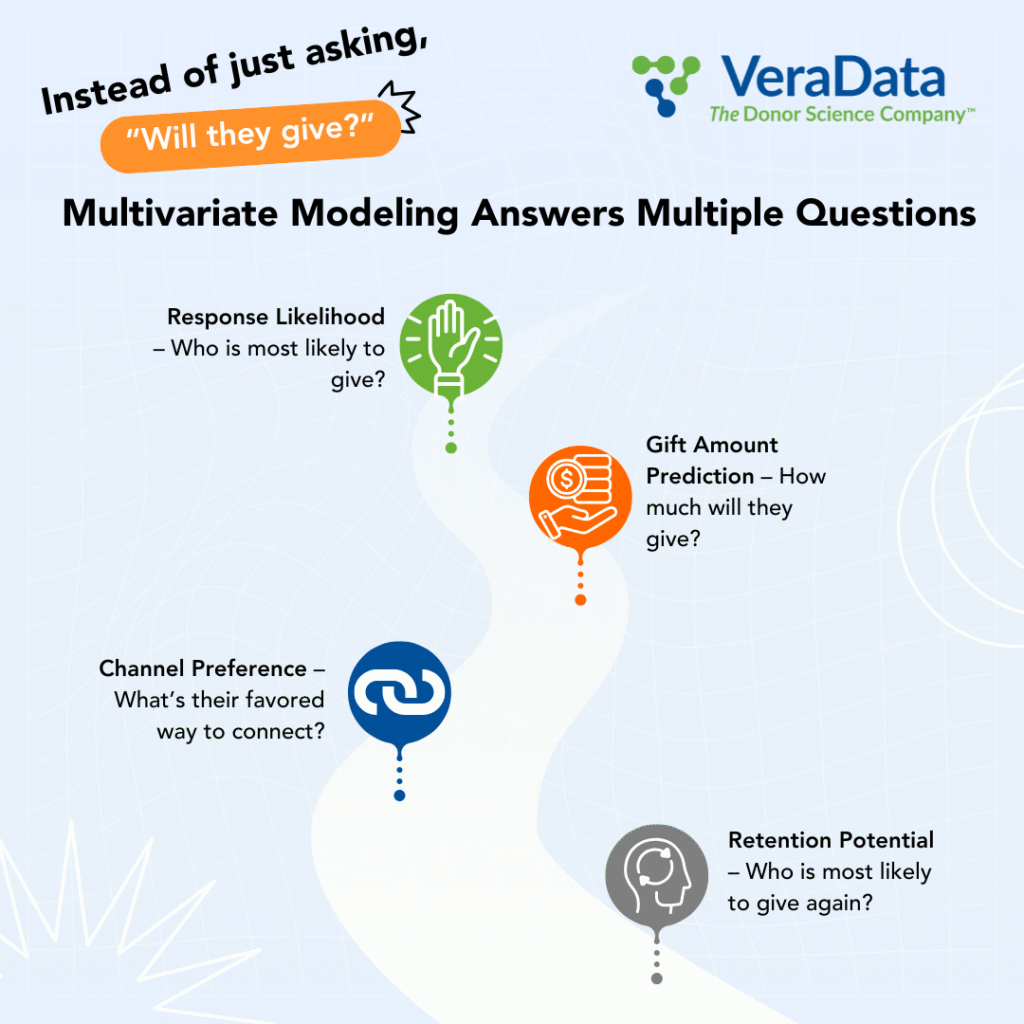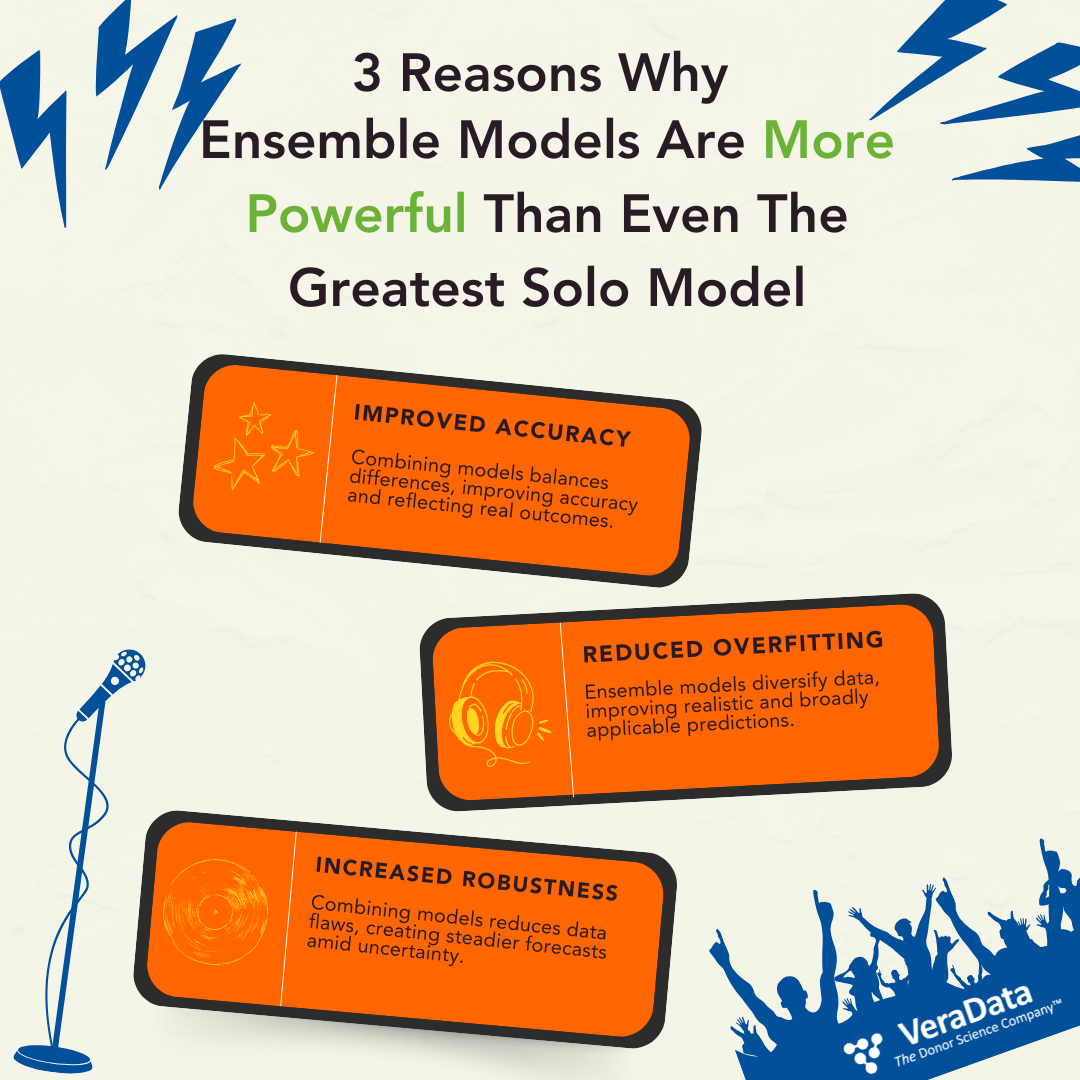Every fundraiser knows the challenge: reaching the right donors with the right message is harder than ever. Mailboxes are full, budgets are tight, and the pressure to deliver results never lets up. Too often, nonprofits lean on singular targeting strategies—like mailing based on past giving alone—that miss the bigger picture.
Most organizations still rely on traditional targeting strategies that focus on a single data point or outcome model. While these methods feel comfortable and tried-and-true, they’re leaving money on the table. The solution? Multivariate modeling backed by Donor Science™ offers a smarter, data-driven path to stronger targeting and higher ROI.
Traditional Donor Targeting: A Single-Lens Approach
Many organizations still rely on one-dimensional metrics, like last gift, total giving history, or simple demographic markers, to decide who receives a direct mail appeal. This method is familiar, straightforward, and easy to apply—which explains its staying power.
But here’s the drawback: single-lens targeting overlooks the complex reality of donor behavior. A donor who gave $50 last year might be ready to upgrade to $100, but your model, focused only on past gift amounts, might miss this opportunity. Meanwhile, you’re sending expensive mailings to donors who show no real engagement signals, leading to wasted resources and missed connections with your most promising prospects.
The Case for Multivariate Modeling
Multivariate modeling takes a different approach by using multiple metrics simultaneously to capture different aspects of donor potential. Multivariate modeling shifts the focus from one data point to a richer, layered view. Instead of just asking, “Will they give?,” these models answer multiple questions at once:
- Response likelihood – Who is most likely to give?
- Gift amount prediction – How much will they give?
- Channel preference – What’s their favored way to connect?
- Retention potential – Who is most likely to give again?
The math is simple: more dimensions equal better predictions. A donor who scores high on response likelihood but low on gift amount gets a different message than someone who’s less likely to respond but typically gives larger gifts when they do.

Donor Science: The Power Behind Multivariate Models
This is where Donor Science™ comes in—the blend of data analytics, behavioral science, and fundraising expertise that makes sophisticated modeling actually work in the real world. Donor Science™ doesn’t just crunch numbers; it identifies the key variables that matter, ensures model accuracy, and uncovers hidden patterns in your donor data that spreadsheets alone might miss.
For example, Donor Science™ can uncover mid-level donors with high upgrade potential—a segment you might never have identified using traditional methods.
How Multivariate Models Strengthen Direct Mail Campaigns
Applied to direct mail, multivariate modeling ensures nonprofits aren’t just reaching donors—they’re reaching them in the most effective way. Consider these scenarios:
- Combining response likelihood with upgrade variables allows an appeal to not only secure more gifts but also increase average gift size.
- Pairing loyalty and channel preference variables helps retain donors by meeting them where they’re most comfortable.
The impact of multivariate mailing on ROI is significant: fewer wasted mailings, higher response rates, and better donor lifetime value. When you stop treating all donors the same, you start seeing results that reflect the true potential of your supporter base.
Overcoming Barriers to Adoption
Some nonprofits hesitate, worrying about complexity, cost, or whether their data is “good enough.” But today’s tools and methods have made multivariate modeling more accessible than ever.
The key is partnering with experts in Donor Science™ who understand both the technical side and the nuances of successful fundraising. They can help you navigate the transition and ensure your models actually improve campaign performance rather than just adding complexity.
The Takeaway
Traditional one-dimensional approaches served nonprofits well in the past, but they’re outdated in today’s data-rich fundraising world. Multivariate modeling—fueled by Donor Science™—offers a smarter, more effective way to connect with donors who are ready to support your mission.
The question isn’t whether you have enough data to make multivariate modeling work—you probably do. The question is whether you’re ready to use that data to transform your direct mail campaigns and turn information into donations. Your donors are complex, multifaceted people. Your targeting strategy should be, too.


